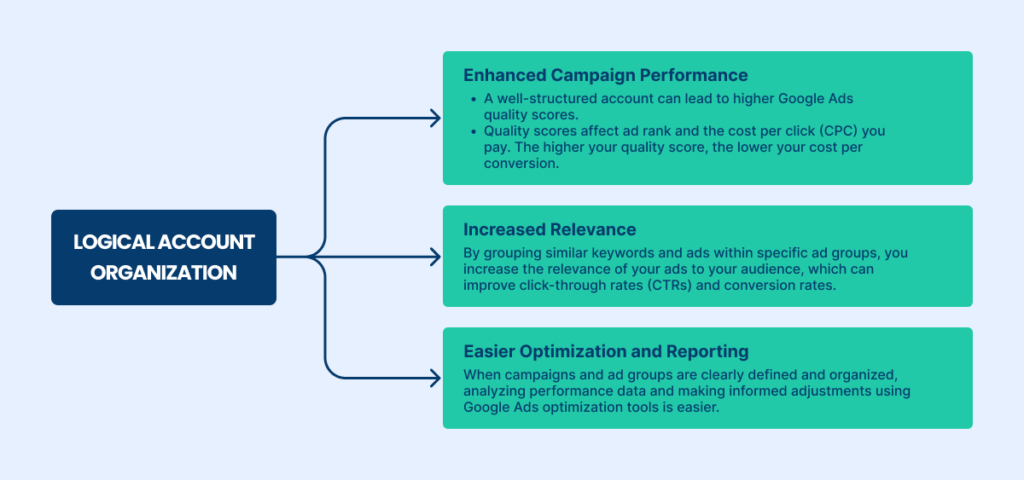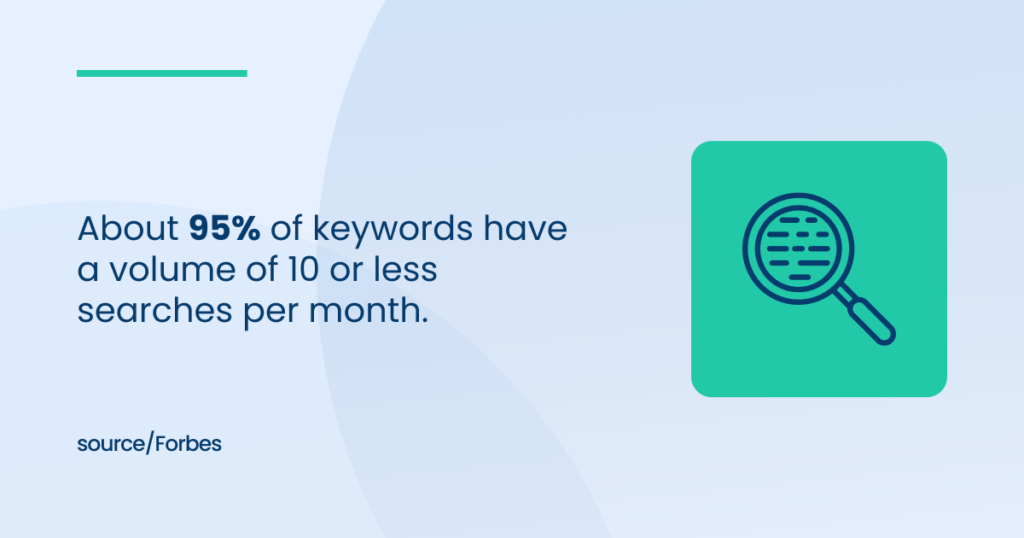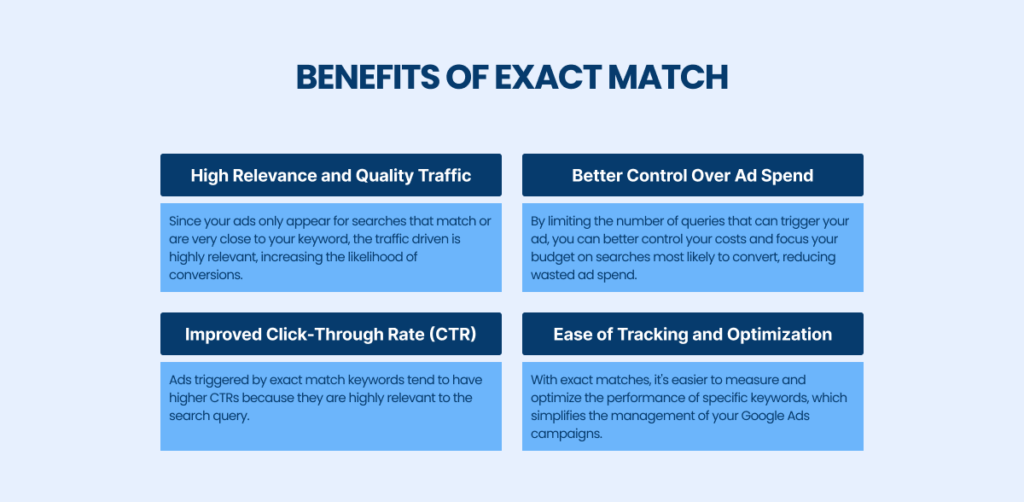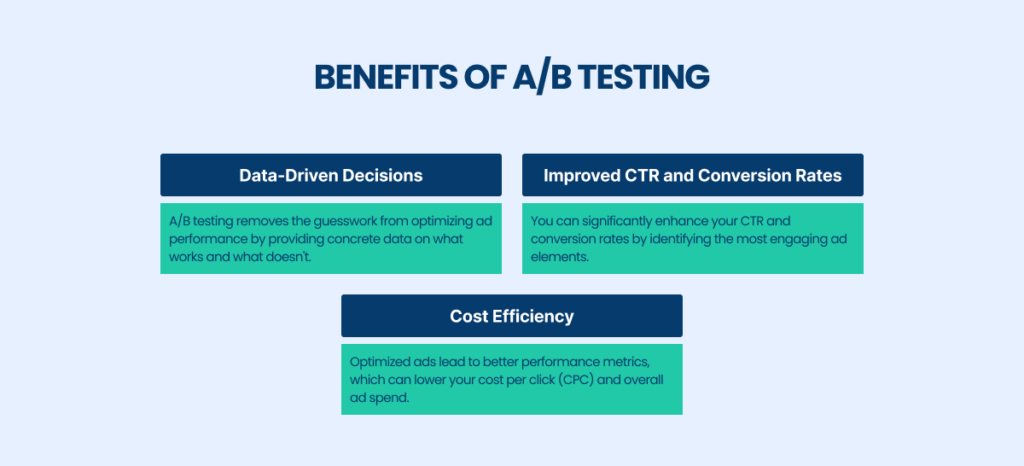In In today’s competitive digital landscape, Google Ads optimization is crucial for maximizing your campaigns’ return on investment (ROI) and driving business growth. With millions of businesses vying for attention, standing out requires a strategic, data-driven approach.
With millions of businesses striving for attention, standing out and achieving optimal performance requires a strategic and data-driven approach.
According to Statista, Google’s ad revenue amounted to 237.86 billion U.S. dollars in 2023.
Source: Google’s Search Traffic, Statista
With the right Google Ads Agency, you can fine-tune your Google ads optimization tool and strategies to ensure your ads reach the targeted audience at the right time.
This guide will introduce top techniques to optimize your Google Ads, helping you maximize efficiency and increase your return on investment.
Discover how these proven methods can transform your digital advertising efforts.
Understanding Your Google Ads Account Structure
A well-organized Google Ads account is the cornerstone of successful digital advertising. Proper structure makes your account easier to manage and enhances your campaigns’ performance, impacting everything from quality scores to cost efficiency.
Source: Semrush
By optimizing your Google Ads account structure, you can better align your advertising efforts with your business goals and audience behaviors.
Importance of Logical Account Organization
The organization of your Google Ads account plays an essential role in its overall effectiveness and efficiency. A logical structure allows for improved targeting, easier management, and more effective optimization.

Tips for Structuring Campaigns and Ad Groups
Effective campaign and ad group structure is key to maximizing your Google Ads performance:
- Segment by Objective: Align each campaign with a clear goal, like sales, leads, or brand awareness, for better bidding and budget allocation.
- Use Descriptive Names: Name campaigns and ad groups clearly to simplify account management and tracking.
- Group Keywords by Theme: Organize ad groups around specific products or themes to improve relevance and performance.
- Single Keyword Ad Groups (SKAGs): Boost ad relevancy and quality scores by creating focused keyword groups.
- Leverage Google Ads Tools: Use Keyword Planner to refine keywords, identify negatives, and target high-converting terms.
- Optimize Quality Score: Improve ad relevance, landing page experience, and CTR to enhance overall performance.
- Review and Refine: Continuously analyze performance data and adjust campaign structure for better results.
A well-structured account ensures higher ROI, improved efficiency, and better alignment with business objectives.
Advanced Google Ads optimizationTechniques
Optimizing keywords is a foundational element of running successful Google Ads campaigns.

Advanced keyword optimization involves more than just choosing the right keywords—it’s about utilizing specific match types to balance reach and relevance, manage your ad spend efficiently, and maximize return on ad spend (ROAS).
These techniques can significantly benefit to your ability to target the most appropriate audiences, optimizing your Google Ads performance.
Using Keyword Match Types Effectively
Keyword match types in Google Ads help determine how closely a search query matches your keyword before your ad is considered for display. Each match type offers different benefits and is suited for different campaign goals, making understanding them crucial for optimizing your campaigns.
Benefits of Exact Match
Exact match keywords allow your ad to show only when the search query corresponds the keyword precisely or very closely. This match type is the most restrictive but offers several benefits.

When to Use Phrase Match and Broad Match
While exact match offers precision, phrase match, and broad match types provide greater reach and can be useful in different scenarios:
- Phrase Match:
- Benefits:
- Allows your ad to show for searches that include your exact keyword in the same order but might have additional words before or after.
- Balances between reach and relevance, making it more flexible than an exact match but more controlled than broad match.
- When to Use:
- When you want to capture variations of your keyword phrase that include additional context.
- Useful for targeting longer queries where the intent is closely related to your keyword.
- Ideal for testing which keyword variations bring the best results.
- Benefits:
- Broad Match:
- Benefits:
- Offers the widest reach, showing your ads for searches related to your keyword, including synonyms, related searches, and other relevant variations.
- Helps capture traffic you might not have considered, which can be analyzed for insights into market behavior.
- When to Use:
- To maximize exposure and capture a wide range of potential customers.
- In the early stages of a campaign gather data on what search terms your target audience is using.
- When combined with remarketing lists for search, it broadens the scope while targeting users who have already shown interest in your products or services.
- Benefits:
Optimizing Your Keyword Strategy
To truly optimize Google Ads campaigns, consider the following strategic steps:
- Use a Google Ads Optimization Tool: Tools like the Keyword Planner can help you find new keywords and see how they might perform.
- Monitor and Adjust Bids According to Performance: Adjust your bids based on the performance metrics of each match type. Higher-performing keywords may warrant higher bids to maximize visibility and conversions.
- Employ Negative Keywords: Use negative keywords to prevent your ads from showing on irrelevant searches, which can save your budget and improve campaign efficiency.
- Continuously Refine Your Keywords: Regularly review your keyword lists and their performance. Remove underperforming keywords and add new ones that can capture additional relevant traffic.
By understanding and effectively using different keyword match types, you can enhance the precision and reach of your Google Ads campaigns.
This strategic approach ensures that you reach a broader audience, maintain relevance, and optimize your ad spend for the best possible returns.
Enhancing Ad Copy and Creatives
Creating compelling ad copy and visually appealing creatives is essential for the success of any Google Ads campaign. Your ad copy is often the first interaction potential customers have with your brand, and it must capture attention and drive engagement.
Writing Compelling Ad Copy
Writing compelling ad copy requires a clear understanding of your audience’s needs and a concentrate on delivering a strong, persuasive message.
Source: Forbes
The following strategies can help you create impactful ad copy:
Key Elements of Effective Headlines and Descriptions
1. Crafting Strong Headlines
Headlines are the most prominent part of your ad and are critical in capturing the user’s attention. A well-crafted headline can significantly improve your ad’s click-through rate (CTR). Here are some Google Ads optimization tips for creating effective headlines:
- Be Direct and Relevant: Your headline should convey the main message or offer. Use straightforward language that directly addresses the user’s intent. For example, if you’re promoting a sale, include words like “Discount,” “Sale,” or “Special Offer.”
- Incorporate Keywords: Using relevant keywords in your headlines improves relevance and boosts your Google Ads quality score. This can head to better ad positioning and lower cost per click (CPC). Ensure that your primary keyword is naturally integrated into the headline.
- Highlight Unique Selling Points (USPs): Emphasize what sets your product or service apart from competitors. This could be free shipping, a money-back guarantee, or exclusive features. USPs can make your ad more appealing and persuasive.
- Use Numbers and Statistics: Numbers can make your headlines more specific and credible. For example, “Save 20% on All Items” or “Join 5,000+ Satisfied Customers.” Statistics can also help highlight the benefits of your offer, making it more compelling.
2. Crafting Effective Descriptions
Descriptions provide additional context and details about your offer, complementing your headline. Effective descriptions can persuade users to click on your ad and explore further. Here are some key considerations:
- Focus on Benefits, Not Just Features: While it’s important to highlight the essentials of your product or service, focusing on the benefits can make your ad more appealing. Explain how your offering can solve the user’s problem or improve their life.
- Include a Clear Call to Action (CTA): A strong CTA encourages users to take the next step, whether making a purchase, signing up for a newsletter, or downloading an app. Use action-oriented language like “Buy Now,” “Sign Up Today,” or “Get Started.”
- Keep It Concise and Clear: Google Ads has character limits for descriptions, so make every word count. Be concise and avoid jargon or complex language. Clarity is key to ensuring that your message is understood quickly.
- Align with Landing Page Content: Ensure that your ad’s content matches the content of the landing page it leads to. This alignment helps improve the user experience and can positively impact your Google Ads quality score. Consistent messaging across ad copy and landing pages can enhance trust and credibility.
Using Google Ads Performance Max for Creative Optimization
Google Ads Performance Max is a goal-based campaign type that uses Google’s machine learning to optimize your ad placements and formats across all of Google’s inventory, including YouTube, Display, Search, Discover, and more.
Leveraging Performance, Max can enhance your creative optimization efforts by:
- Automating Creative Testing: Performance Max automatically tests different creative combinations to find the best-performing ones. This includes testing headlines, descriptions, images, and videos, ensuring that the most effective creatives are shown to users.
- Maximizing Reach and Engagement: By utilizing multiple Google Ads attribution models, Performance Max can identify which creatives and messages resonate best with different segments of your audience. This helps maximize engagement and achieve campaign goals.
Additional Google Ads Optimization Tool and Tips for Creatives
- Use a Google Ads Optimisation Tool: The Ad Preview and Diagnosis tool can assist you see how your ads appear on different devices and platforms. This can help you optimize your creatives for various formats and screen sizes.
- Leverage A/B Testing: Continuously test different versions of your ad copy and creatives to see which ones perform best. Use the data gathered from these tests to refine and improve your ads.
- Monitor and Adapt: Monitor and adapt your ads’ performance metrics, such as CTR, conversion rate, and cost per conversion. Use this data to make informed decisions and adapt your ad copy and creatives accordingly.
- Focus on Mobile Optimization: With growing users accessing ads on mobile devices, ensure that your ad copy and creatives are optimized for mobile viewing. This includes using clear, concise text and high-quality images that load quickly.
Enhancing your ad copy and creatives is crucial to optimizing your Google Ads campaign. You can create more effective and engaging campaigns by focusing on crafting compelling headlines and descriptions, leveraging tools like Google Ads Performance Max, and continuously testing and refining your ads.
This improves your CTR and conversion rates and maximizes your return on ad spend, making your advertising efforts more efficient and successful.
Testing and Google Ads Optimizing Creative Elements
Testing and optimizing creative elements are crucial in ensuring your Google Ads campaigns are as effective as possible. Creative elements, such as ad copy, images, and videos, significantly attract and engage your target audience.
To maximize the impact of these elements, it’s essential to test and refine them continually.
A/B Testing for Ads
A/B testing, also known as split testing, is a method for comparing two versions of an ad to determine which one performs better. This process involves changing one element at a time while keeping other variables constant.
Source: Tech report
A/B testing is vital to Google Ads optimization as it provides data-driven insights into what resonates best with your audience.
Steps for A/B Testing:
- Identify the Element to Test: Select a specific element of your ad to test. This could be the headline, description, call-to-action (CTA), image, or URL. For example, you might test two headlines to see which generates a higher CTR.
- Create Variations: Develop two ad versions with only the chosen element changed. It’s crucial to alter just one variable at a time to attribute performance differences to that specific change.
- Set Clear Goals: Define what success looks like for your A/B test. Common metrics include CTR, conversion rate, and cost per conversion. Having clear goals helps in evaluating which version is truly the best-performing ad.
- Run the Test: Launch both ad versions simultaneously to ensure they receive similar exposure. Use a Google Ads optimization tool to split traffic evenly between the two versions.
- Analyze Results: After running the test sufficiently, analyze the data to determine which ad performed better based on your predefined goals. Look for statistically significant differences in performance to make informed decisions.
- Implement the Winning Ad: Implement the winning ad as your standard once the results are in. However, testing should be an ongoing process. Continually experiment with different elements to keep improving your ad’s effectiveness.
Benefits of A/B Testing:

Using Ad Extensions to Enhance Visibility and CTR
Ad extensions are additional information that expands your ad and provides more reasons for users to click. They are a powerful Google Ads optimization tool that can significantly improve the visibility and CTR of your ads.
There are various ad extensions, each serving a unique purpose and offering different benefits.
Types of Ad Extensions:
- Sitelink Extensions: You can add links to specific website pages below your ad. They are useful for directing traffic to specific sections of your site, such as a special offers page or a product category.
- Call Extensions: These add your phone number to the ad, enabling users to call your business directly from the search ad. This is particularly beneficial for businesses that rely on phone inquiries.
- Location Extensions: Display your business address to make it easier for users to find you. This is especially useful for local businesses looking to attract nearby customers.
- Callout Extensions: Provide additional text highlighting key information or unique selling points about your products or services, such as “Free Shipping” or “24/7 Customer Support.”
- Structured Snippet Extensions: Highlight specific aspects of your products or services, such as types of products, brands, or services offered. This helps users quickly identify if your offerings match their needs.
Improving Landing Page Experience
The effectiveness of your Google Ads campaigns isn’t just determined by the ad copy or the keywords you choose; the landing page experience also plays a crucial role.
Source: HubSpot
A well-optimized landing page can significantly boost conversions and enhance the overall performance of your search campaigns.
Alignment Between Ads and Landing Pages
One of the fundamental principles of Google Ads optimization is ensuring a seamless transition from the ad to the landing page. This alignment, also known as message match, helps maintain the user’s journey, reduces bounce rates, and increases the likelihood of conversions.
Consistency in Messaging and Design
- Consistency in Messaging: The message conveyed in your ad should match the content on your landing page. For example, if your search ads promote a discount or a specific offer, the landing page should reflect that same offer. This consistency reassures the user that they’ve landed on the right page and can find the promised information.
- Design Consistency: Visual consistency between your ads and landing pages can significantly enhance user trust and engagement. Use similar colors, fonts, and branding elements to create a cohesive experience. This consistency helps reinforce your brand identity and makes the user’s experience more seamless and intuitive.
- Responsive Design: In today’s mobile-first world, ensuring your landing pages are responsive is crucial. With many users accessing search ads via mobile devices, a landing page that doesn’t render well on smaller screens can lead to high bounce rates. Use a Google Ads optimization tool to test how your landing pages appear on different devices and make necessary adjustments.
Optimizing Landing Page for Conversions
Once you’ve aligned your ads and landing pages, the next step is to optimize the landing page to drive conversions. This involves creating a compelling user experience and providing clear, actionable paths for users to follow.
Best Practices for Call-to-Action and User Experience
- Clear and Compelling CTA: Make your CTA visible, actionable, and attention-grabbing. One of the essential Google AdWords tip is to use phrases like “Get Started,” “Sign Up Now,” or “Claim Your Offer,” and highlight it with bold colors or fonts.
- Minimal Distractions: Keep the landing page focused on the desired action. Avoid clutter to improve conversion rates.
- Relevant and Engaging Content: Align content with your ad, use headers, bullet points, and concise text. Highlight benefits, features, and testimonials.
- Use Visual Elements: Enhance engagement with images, videos, or infographics that support your main message.
- Loading Speed: Ensure fast page load using tools like PageSpeed Insights; optimize images and scripts for better performance.
- Simple Forms: Ask only for essential information and consider multi-step forms. Emphasize benefits like free resources or demos.
- Testing and Iteration: Continuously A/B test elements such as headlines, CTAs, and visuals. Use results to refine the landing page and boost conversions.
Following these best practices improves user experience, maximizes conversions, and enhances your Google Ads performance.
Partner with [A] Growth Agency For Google Ads Optimization
By mastering the art of Google Ads optimization, you can transform your campaigns from ordinary to extraordinary.
Implementing the techniques discussed today—from meticulous keyword research and compelling ad copy to precise audience targeting and intelligent bidding strategies—can unlock the full potential of your advertising efforts.
Remember, Google Ads is a dynamic platform that requires continuous monitoring and adaptation. Stay informed about the latest trends with [A] Growth Agency, experiment with new features, and leverage data to make informed decisions.
With dedication and a data-driven approach, our team will help you to achieve remarkable results and drive your business to new heights. We strictly believe that success in digital advertising hinges on continuous learning and adaptation.
By leveraging our expertise in Google Ads optimization and employing proven strategies, we aim to provide you with a competitive edge in your industry.
Let’s embark on a journey to maximize your online presence and achieve unparalleled growth.

